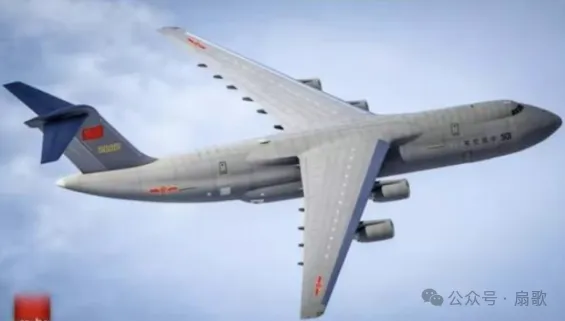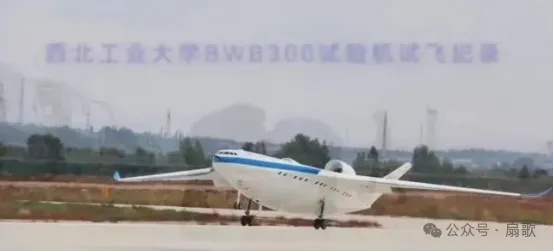Preface: Recently, there has been a spread of news regarding the Y-40 strategic transport aircraft, with a takeoff weight of 450 tons, which sounds a bit staggering. This article analyzes this news:
The Y-40 strategic transport aircraft is a large military transport aircraft under development in China. Its design goal is to meet the needs of our military for long-range strategic projection and large-scale troop deployment. Here are some basic information and features of the Y-40 strategic transport aircraft:
1. Design Features: The Y-40 strategic transport aircraft adopts advanced aerodynamic design and advanced composite material manufacturing technology, with a large payload capacity and long range. At the same time, it also adopts advanced flight control systems and navigation systems to ensure safe flight in various complex weather and terrain conditions.
2. Payload Capacity: The maximum takeoff weight of the Y-40 strategic transport aircraft reaches 450 tons, and the payload capacity also reaches 150 tons, allowing it to transport a large number of troops and main battle tanks in one go. In addition, the Y-40 also has a large cargo hold volume, capable of accommodating various large equipment and vehicles.
3. Range Capability: The maximum range of the Y-40 strategic transport aircraft reaches 16,000 kilometers, which means it can take off from a base in our country and fly directly to certain areas in Europe or Africa without the need for aerial refueling.
4. Engines: The Y-40 strategic transport aircraft is equipped with four turbofan engines, providing it with powerful thrust and stability. Moreover, these engines also have high fuel efficiency and low maintenance costs.
5. Strategic Significance: The development of the Y-40 strategic transport aircraft is of great significance for enhancing our country’s military’s capabilities in long-range strategic projection and large-scale troop deployment. It will become one of the important equipment for the Chinese Air Force and Army, providing strong guarantees for our national security and development.
Reference Model:
The AN-124 Transport Aircraft (English: AN-124 Heavy Transport Aircraft, Russian: Ан-124) is a heavy transport aircraft designed by the Soviet Antonov Design Bureau. It is nicknamed “Ruslan” (Руслан). The AN-124 was originally designed to transport heavy equipment of the Soviet Army, such as main battle tanks, heavy artillery, and missile systems. Its cargo hold is quite spacious, with a width of 6.4 meters, height of 4.4 meters, and length of 36.5 meters, capable of carrying various heavy equipment, with a maximum payload of up to 150 tons and a normal payload of up to 120 tons. In addition, the total volume of the cargo hold is 1160 cubic meters, and the loading and unloading of goods can be done through the nose door and rear cargo door ramp. The height of the cargo hold floor can be adjusted to tilt the aircraft forward or backward for easy loading and unloading of goods. The cargo hold is also equipped with 2 electric winches and 4 electric lifting winches, with a maximum lifting weight of up to 30 tons. The AN-124 transport aircraft is equipped with four P-18T turbofan engines designed by the Lotarev Design Bureau, with a thrust of 23 tons per engine, a bypass ratio of 6, and a fuel consumption rate of 0.63 kg/kg·hour. The engines have thrust reversers. In addition, two TA-12 auxiliary power units are also installed. During cruise flight, fuel consumption is 10 tons per hour, which increases to 17 tons during climb above cruise altitude.
The dimensions of the AN-124 are also quite large, with a length of 69 meters, a wingspan of 73 meters, and a height of 21 meters. The empty weight of the whole aircraft is 172 tons, and the maximum takeoff weight can reach 406 tons. It can carry 6-7 crew members, or transport 88 passengers or 130-150 tons of cargo, or 1160 cubic meters of objects. Its maximum cruising speed can reach 860 kilometers per hour, and its practical range is 4500 kilometers, with a climb altitude of up to 9500 meters.
The AN-124 transport aircraft adopts many innovative designs and technologies. However, with the disintegration of the Soviet Union, the production line of the AN-124 was also closed in 1994. Nevertheless, existing AN-124s are still in commercial operation worldwide.
C5 Galaxy Transport Aircraft
The C5 transport aircraft with a similar takeoff weight: When transporting goods, the main schemes are as follows: 2 M1 tanks, 16 3-ton trucks; 6 AH-64 “Apache” armed helicopters, 10 “Penguin” medium-range ground-to-ground missiles and their launch vehicles, 36 standard cargo pallets. In the 70 days before the outbreak of the Gulf War, the US Air Force mobilized a total of 280 C-5 and C-141 transport aircraft, with an average of 300 flights per day, with a total air transport volume of 191,500 tons, accounting for 85% of the air transport tasks supporting combat operations carried out by the US Air Force with 145,000 flight hours, completed by C-5 and C-141 transport aircraft. In Operation Desert Storm, the US Military Airlift Command called up 93% of C-5 Galaxy transport aircraft, along with C-141, to transport 320,000 tons of goods and more than 160,000 people.
The Necessity of Y-40
In the current fleet sequences of the Russian Aerospace Forces, Russian Volga-Dnepr Airlines, and Ukrainian Antonov Airlines, there are still a large number of AN-124 transport aircraft in service. In addition to playing the role of military strategic transport aircraft, these AN-124 transport aircraft actually undertake a large number of civil aviation transportation tasks. The reason why there is a need for strategic transport aircraft like the AN-124 to undertake a large number of strategic transportation tasks is actually a global gap in aviation transportation. This is because a large amount of special cargo requires air transportation, and thus requires large-sized transport aircraft to complete. However, some ordinary civil cargo aircraft are simply incapable of transporting such goods. In the past, the AN-124 transport aircraft has helped our country complete the transportation tasks of artificial satellites and spacecraft many times.
Although Russia is still flaunting the AN-124 transport aircraft, in fact, the AN-124 transport aircraft is already too old. Whether it is the AN-124 transport aircraft or the current IL-76 transport aircraft, it is very difficult to produce them. Currently, the only transport aircraft in production worldwide is the Y-20 strategic transport aircraft from our country.
Two Technical Challenges
Engine:
Some key parameters of the CJ2000 engine, the thrust reaches 35 tons, the fan diameter reaches 3 meters, and the overall height reaches 4.55 meters. The maximum thrust of the CJ1000A engine, which is compatible with the C919, is 13.6 tons, and the fan diameter is 1.95 meters. It is made of 18 wide-chord carbon fiber high-tech fan blades and titanium alloy leading edges.
Public information shows that in March 2020, the core engine C2XC-101 of the CJ2000 engine was successfully ignited for the first time; in July 2020, the CJ2000AX technology validation aircraft completed the assembly. At the end of December 2020, the CJ2000AX technology validation aircraft entered the engine test phase. It is expected that the CJ2000 will obtain type certification from 2026 to 2027, and the supporting model is the C929 twin-engine large passenger aircraft. However, four engines can be equipped for the Y-40. This engine has good economic performance and long life and is very suitable for large transport aircraft. With a maximum takeoff weight of 450 tons and a thrust-to-weight ratio of 0.3, theoretically, the takeoff weight can be increased to 500 tons. However, the consequence of doing so is that it will be too limited in adapting to airports. After all, this is a military transport aircraft that requires the ability for short-distance takeoff and landing. AN225 and A380 have encountered similar problems, which restricts their use, and this is something we need to pay attention to.
Main Structural Design and Manufacturing
As the main structural component of the aircraft, the fuselage bears the weight of the entire aircraft and various forces during flight. Therefore, the manufacturing process of the fuselage is extremely demanding on material selection and processing technology. In terms of materials, modern large aircraft fuselages typically use high-strength and lightweight composite materials, such as carbon fiber reinforced plastics, to ensure both the strength of the fuselage and reduce the overall weight of the aircraft.
In terms of processing technology, the manufacturing of modern large aircraft fuselages mostly adopts digital design and manufacturing technology. Through high-precision 3D scanning and CNC machining equipment, manufacturing plants can convert design drawings into actual fuselage components.
In addition to traditional processing techniques, modern large aircraft fuselage manufacturing also requires the application of new technologies. For example, additive manufacturing (3D printing) technology is gradually being applied to the manufacturing of aircraft fuselages. Through 3D printing technology, engineers can manufacture structurally complex and high-performance components, greatly improving manufacturing efficiency and component accuracy.
The manufacturing process of large aircraft fuselages also involves the installation and debugging of numerous subsystems and components. These subsystems include fuel systems, flight control systems, cabin environmental systems, etc., each with its unique functions and requirements, to achieve the maximization of the aircraft’s overall performance.
I already have the relevant technology for the Y-20, and for a 450-ton class transport aircraft, the difficulty is not great. If things progress smoothly, it should be able to enter service in bulk within 7-10 years.
Future Prospects: BWB Configuration Transport Aircraft
Traditional “tube-wing” design, the fuselage bears most of the load, but it does not play a significant role in increasing lift. The stress at the root of the aircraft wing is very concentrated, so a very strong “central wing box” structure must be designed at the wing root. However, this adds considerable weight to the aircraft and reduces operational efficiency.
The BWB design widens the original cylindrical shape of the aircraft, and the wings smoothly integrate into the fuselage at the wing root. In appearance, the fuselage and wings are seamlessly integrated without obvious demarcation lines. The lift-to-drag ratio has increased from 17 to nearly 28, reducing fuel consumption by over 40%.
Xi’an Jiaotong University has also conducted research on the BWB and has simulated flights:

